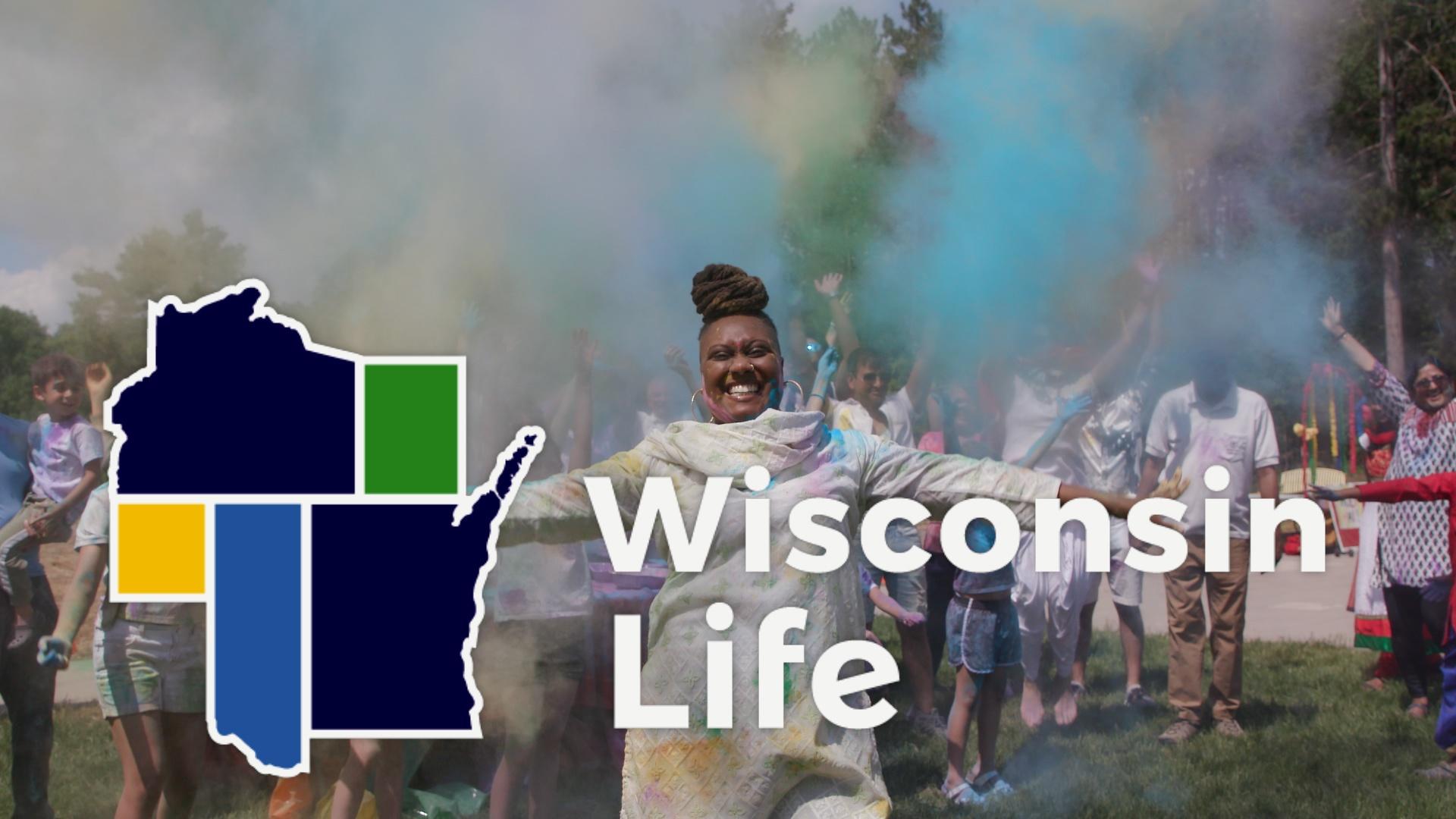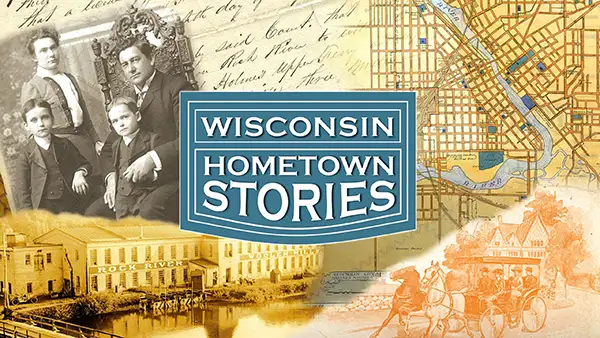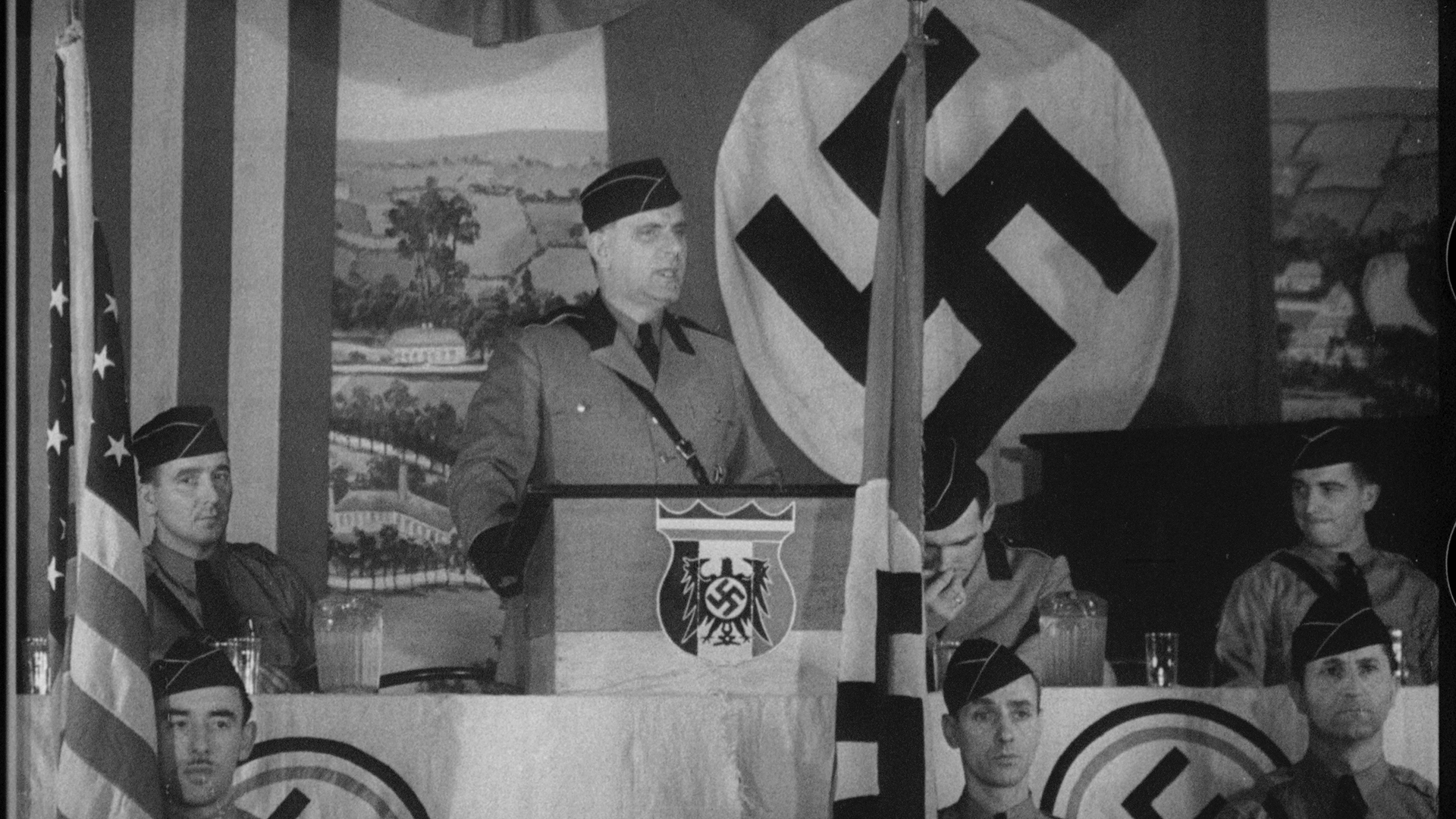‘American Experience: Nazi Town, USA’ chronicles the rise and fall of pro-Nazi German American Bund
January 12, 2024 Leave a Comment
In February 1939, more than 20,000 Americans filled Madison Square Garden for an event billed as a “Pro-American Rally.” Images of George Washington hung next to swastikas and speakers railed against the “Jewish controlled media” and called for a return to a racially “pure” America. The keynote speaker was Fritz Kuhn, head of the German American Bund.
American Experience: Nazi Town, USA tells the largely unknown story of the Bund, which had scores of chapters in suburbs and big cities across the country and represented what many believe was a real threat of fascist subversion in the United States. The Bund held joint rallies with the Ku Klux Klan and ran dozens of summer camps for children centered around Nazi ideology and imagery, including Camp Hindenburg in Wisconsin.
Its melding of patriotic values with virulent anti-Semitism raises thorny issues that we continue to wrestle with today.
Produced, directed and written by Peter Yost, produced by Edna Alburquerque, and executive produced by Cameo George, American Experience: Nazi Town USA premieres 9 p.m. Tuesday, Jan. 23 on PBS Wisconsin and will be available for streaming on the free PBS App.
Emergence of the Bund
The German American Bund emerged in the 1930s, a period that tested the fabric of American democracy. The economic hardships of the Great Depression left many Americans fearing that the whole social order might collapse and extremist groups on both the right and the left found willing converts. Many, like the Bund, saw European fascism and Nazism as models that could and should be emulated in the United States.
1930s America was also a place of deep anti-Semitism, anti-immigrant sentiment and racial segregation. Millions of Americans belonged to the KKK, including dozens of members of Congress. The popular right-wing radio priest, Charles Coughlin, told listeners that Jews were destroying their country, and industrialist Henry Ford devoted his time and money to the widespread dissemination of anti-Semitic conspiracies. All of this led members of the Bund to believe that America offered fertile ground for their ideas.
Growth of the Bund
Headquartered in the Yorkville neighborhood on Manhattan’s Upper East Side, the Bund was organized into more than 50 districts across the country and made great efforts to appeal to families and children, running summer camps nationwide. Some of the largest — including Camp Siegfried in Long Island and Camp Nordland in New Jersey — essentially functioned as indoctrination centers for young and old alike. The Bund also created a network of storm-troopers that marched openly in cities across America and a front organization called the German American Settlement League to establish planned communities for German-American families. In Yaphank, Long Island, they built a community called German Gardens, with streets named after prominent Nazis including Adolf Hitler.
Rise and fall of the Bund
The isolationist sentiments of the Bund’s leader, Fritz Kuhn, known as “The American Fuhrer,” aligned with the ideas of “America Firsters,” including Charles Lindbergh, who pushed to keep the United States out of the war in Europe by fanning nativist sentiment. Ultimately, the Bund opposed democracy and believed government was best when organized hierarchically, with a powerful dictator at the top. Kuhn imagined that America would be a kind of star in a constellation of pro-Nazi governments around the world, and his leadership climaxed with the massive 1939 rally in Madison Square Garden when some 20,000 Bund supporters gathered — only to be opposed by tens of thousands of counter-protesters outside. By then, grassroots resistance to the Bund was gaining steam, including actions organized by Jewish mobsters and investigations by intrepid journalists who infiltrated the Bund to expose its inner workings and call out American fascism.
Soon after the Madison Square Garden rally, Fritz Kuhn was jailed on embezzlement charges and ultimately deported as an unregistered foreign agent. Many Americans, however, continued to support right wing organizations like the Bund and isolationist groups like Lindbergh’s “America First” right up to the United States’ entry in World War II, when the Bund finally collapsed. Its ugly history was largely forgotten and few ever reckoned with the appeal that fascist ideas had held to many Americans during the tumultuous 1930s.
“Nazi Town, USA traces the rise and fall of the German American Bund and the threat posed by domestic fascism in the 1930s,” said director Peter Yost. “There’s a resonance in the film with today’s fractured times and I hope the story can serve as a reminder of both the fragility — and resilience — of American democracy.”
 Passport
Passport






John Bevilaqua says:
Please read JFK THE FINAL SOLUTION by yours truly on Amazon, Barnes and Noble or Kindle. It chronicles the story of Anastase “Annie” Vonsiatsky who was Richard Condon’s “Manchurian Candidate” in his novel and Wickliffe Draper who was the model for “Big Daddy Warbucks” in the Little Orphan Annie comic strip by Col Robert McCormick. This manuscript should be made into a movie of some type.
John Bevilaqua says:
Anastase Vonsiatsky was a leader of the German Americam Bund and he led the plot against JFK.